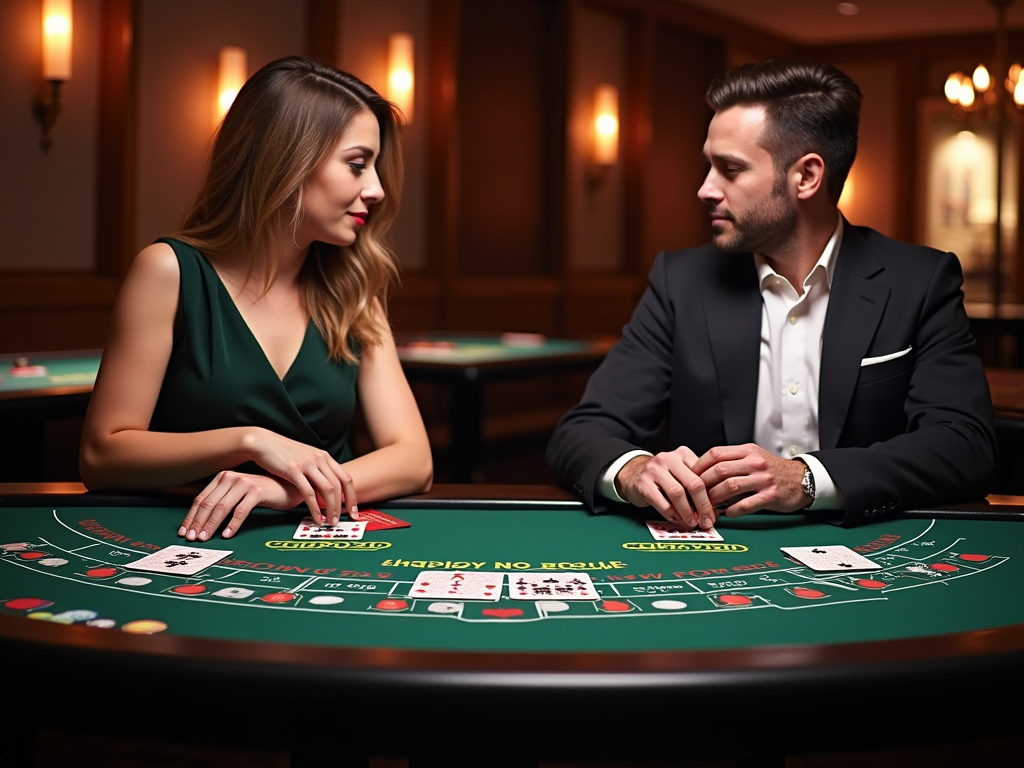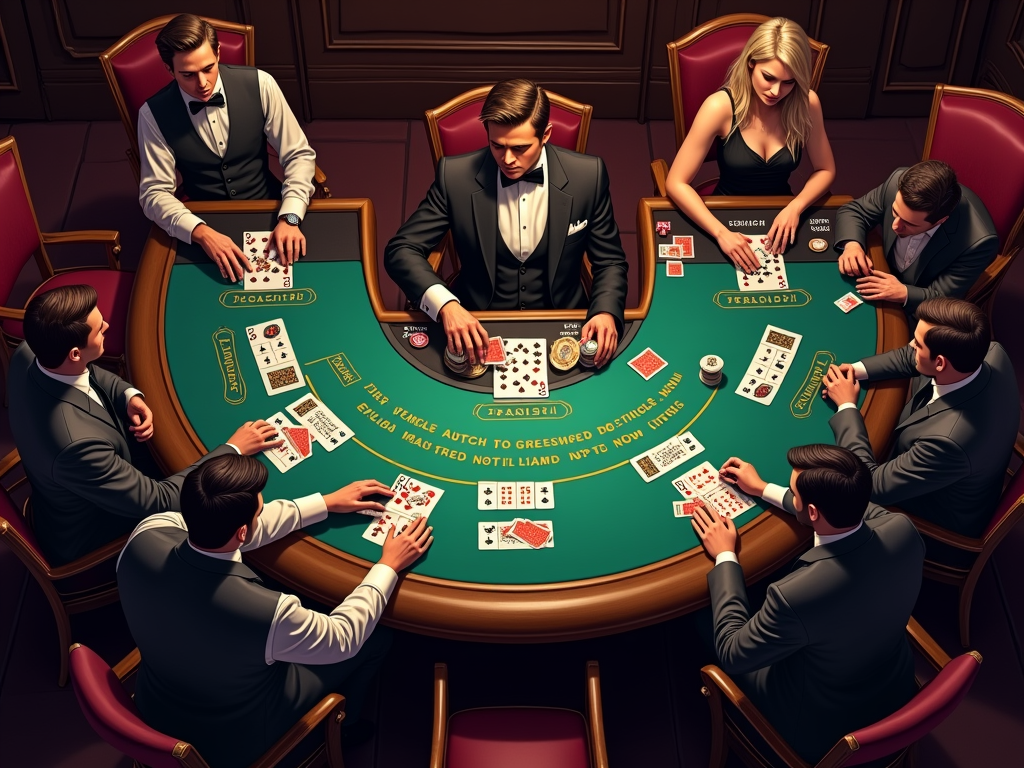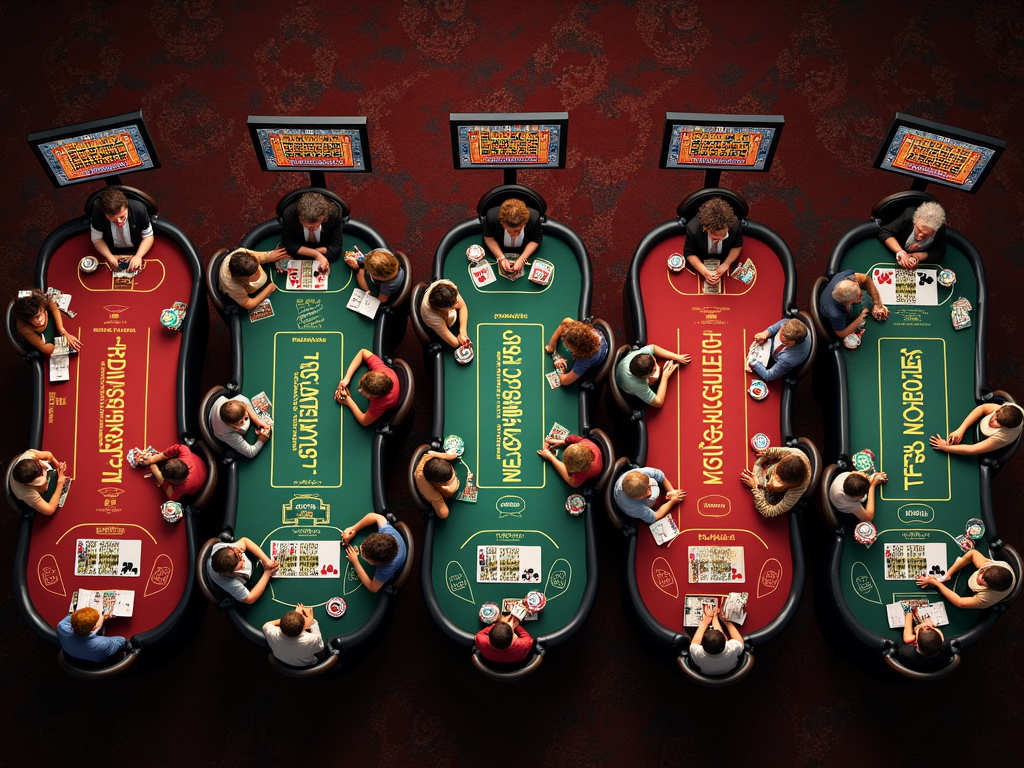How Different Blackjack Variations Shape My Gaming Decisions
Different blackjack variations shape my gaming decisions through their modified rules and betting choices. Each version affects the house edge and optimal strategy while preserving the classic thrill of traditional blackjack.
Key Takeaways
- Standard blackjack delivers top casino odds with just a 0.5% house edge using optimal strategy
- The 6:5 payout rule hurts players most, adding 1.4% to the house edge
- Spanish 21 and Pontoon favor players with house edges as low as 0.3-0.4%
- European blackjack carries a slightly higher house edge (0.62%) than American rules (0.5%) due to the dealer’s delayed peek
- Modern versions like Perfect Pairs and Super Fun 21 include exciting side bets but increase the house edge
Choosing the Right Blackjack Variation
I find that understanding these variations helps me select the best games and adapt my strategy. While side bets bring extra excitement, I stick to basic versions that give me better winning odds. Mastering the rules for each variant lets me make smarter betting decisions at the tables.
Learning Through Rule Modifications
The modified rules create unique opportunities in each version. Spanish 21 rewards skilled play with better odds, while European rules require adjusted strategies. Perfect Pairs and other modern takes add fresh elements but demand careful bankroll management due to their higher house edges.
My Blackjack Priorities
My focus stays on variations offering the strongest mathematical advantage. This means prioritizing games with traditional 3:2 payouts and favorable dealer rules while avoiding 6:5 tables despite their growing presence in casinos.
The House Edge Battle: How Different Rules Impact Your Game
Understanding Basic House Edge
I’ve found that standard blackjack offers one of the best odds in casino gaming, with only a 0.5% house edge when using optimal basic strategy. This means for every $100 wagered, you can expect to lose only 50 cents in the long run – making it an attractive option for strategic players like me.
Rule Variations That Change Your Odds
Casino operators often modify standard rules, which can significantly affect your winning chances. Here are the key rule changes I’ve analyzed that impact the house edge:
- The 6:5 payout on blackjack (instead of the traditional 3:2) adds a substantial 1.4% to the house edge – this is the most damaging rule change for players
- When dealers hit on soft 17, it increases the house edge by 0.22%
- Playing with a single deck improves your odds by reducing the house edge by 0.17% compared to an 8-deck game
- Having the late surrender option available helps players by decreasing the house edge by 0.08%
I always check these specific rules before sitting down at any blackjack table. The 6:5 payout is particularly important to watch for – I recommend avoiding these tables whenever possible since they cut significantly into your potential winnings. While single-deck games might seem appealing, they’re rare and often come with other unfavorable rules that offset the advantage.
For a deeper understanding of casino game odds and strategies, I recommend checking out my complete guide to casino table games. If you’re interested in learning about different betting systems that can be applied across various casino games, take a look at my analysis of proven betting strategies and systems.
Remember that these rule variations can stack up – both positively and negatively. A game with multiple player-friendly rules might offset one negative rule, while several unfavorable rules can turn an otherwise good game into one that should be avoided. The key is to identify and select tables with the most advantageous combination of rules for your playing style.

Classic American vs European Rules: Understanding the Core Differences
I’ve found that American and European blackjack variations create distinctly different gaming experiences, with their unique rules affecting both strategy and potential outcomes.
Key Rule Distinctions
The most significant difference lies in how dealers handle their cards. In American blackjack, dealers check their hole card right away when showing an Ace or ten-value card. This quick peek for blackjack adds a layer of protection for players since the hand ends immediately if the dealer has blackjack.
European rules take a different approach — the dealer won’t check for blackjack until after all players have acted. This means you might double down or split pairs only to lose additional bets when the dealer reveals a blackjack.
Here are the main differences that impact your game:
- European rules limit doubling down to hard totals of 9, 10, or 11
- American games often allow doubling on any two cards
- European dealers typically stand on soft 17
- American rules vary by casino on soft 17
- Both versions pay 3:2 on natural blackjacks
The house edge reflects these rule variations. European blackjack carries a slightly higher house edge of 0.62% compared to American rules at 0.5%. This difference primarily stems from the delayed dealer peek and more restrictive doubling options in European games.
Much like learning baccarat variations and rules, mastering these blackjack differences helps inform better strategy choices. For players looking to optimize their approach, I recommend studying specific betting systems and strategies that align with each variation’s unique rules.
The timing of the dealer’s blackjack check creates different psychological dynamics too. American rules provide faster feedback and potentially less anxiety, while European rules can create more suspense as players commit to decisions before knowing the dealer’s full hand.
Spanish 21 and Pontoon: The Player-Friendly Variations
Spanish 21: A Unique Twist on Classic Blackjack
Spanish 21 offers an exciting spin on traditional blackjack with player-friendly rules and generous bonus payouts. The game uses a modified 48-card deck with all 10s removed, creating a unique playing experience. I’ve found that the most appealing aspect is how player blackjack always beats dealer blackjack – a significant advantage over standard blackjack rules.
The bonus payout structure makes Spanish 21 particularly attractive. Here’s what you can expect:
- 3:2 payout for achieving 21 with five cards
- 2:1 payout for reaching 21 with six cards
- 3:1 payout for making 21 with seven or more cards
With optimal strategy, the house edge sits at just 0.4%, making it one of the most player-friendly casino games available.
Pontoon: British-Style Blackjack with Better Odds
Pontoon takes the excitement up a notch by offering even better winning opportunities. The standout feature is the 2:1 payout for blackjack, doubling the standard 3:2 odds found in classic casino card games and strategies.
One of my favorite aspects of Pontoon is the Five Card Trick rule – if you collect five cards without busting, you’ll win automatically. This creates additional strategic opportunities compared to traditional blackjack variations. The house edge ranges from 0.3% to 0.4% with proper strategy, putting it on par with other popular table games.
The removal of 10s from Spanish 21 and the unique bonus structures in both games create fresh strategic considerations. Players need to adjust their typical blackjack approach, but the rewards can be substantial. These variations add new layers of excitement while maintaining favorable odds for skilled players.
Advanced Variations: Blackjack Switch and Double Exposure
Blackjack Switch: A Strategic Twist
Blackjack Switch adds an exciting dimension to traditional blackjack by letting players handle two hands simultaneously. The game’s standout feature is the ability to swap second cards between your hands, creating stronger combinations and better winning chances. Yet, there’s a catch: blackjacks only pay even money (1:1) instead of the standard 3:2, and a dealer’s 22 results in a push against any non-busted player hand.
These unique rules create a house edge of 0.58%, making it one of the more player-friendly variations you’ll find on the casino floor. To master card game strategy and rules, I recommend focusing on identifying optimal switching opportunities while keeping the modified dealer rules in mind.
Double Exposure: Reading the Dealer’s Hand
Double Exposure blackjack turns traditional gameplay on its head by showing both dealer cards face-up from the start. This transparent approach might seem like a massive advantage, but the casino balances this through modified rules:
- Dealer wins all ties except for natural blackjacks
- Blackjacks typically pay even money (1:1)
- Players can’t surrender
- Doubles are restricted to certain hand totals
The resulting house edge sits at 0.67%, making it comparable to standard blackjack variations. I’ve noticed that success in Double Exposure requires a different strategic approach—one that focuses on analyzing betting patterns and making decisions based on complete information about the dealer’s hand.
The key to succeeding in both variations lies in adapting your basic blackjack strategy to account for their unique rules. Double Exposure demands aggressive playing against dealer weak hands, while Blackjack Switch requires careful evaluation of switching opportunities to create the strongest possible hands.

Perfect Pairs and Super Fun 21: Modern Adaptations
Perfect Pairs: A Side Bet Adventure
Classic casino card games get a vibrant update with the addition of the Perfect Pairs side bet. This thrilling variation focuses on whether your first two dealt cards will form a pair. While the lure of big payouts is strong, it’s important to consider the underlying odds before taking the plunge.
Here’s what you can expect from Perfect Pairs payouts:
- Mixed Pairs (different colors) – 6:1 payout
- Colored Pairs (same color) – 12:1 payout
- Perfect Pairs (identical suits) – 25:1 payout
Despite the attractive returns, keep in mind this bet carries a house edge ranging from 5% to 11%. This makes the Perfect Pairs wager more of a fun bet than a foundational strategy. It’s best enjoyed as a light-hearted addition rather than a core tactic.
Super Fun 21: Breaking Traditional Rules
Super Fun 21 reimagines traditional blackjack with a refreshing set of player-friendly rules. It uses a single deck and offers unique gameplay features that can significantly alter your in-game decisions. One of the key attractions is that a player blackjack automatically wins against a dealer blackjack, though it only pays even money (1:1).
What elevates Super Fun 21 are its bonus payouts for uncommon and exciting hand combinations. If you manage to collect six cards without busting, or create a specific diamond-suited hand, you’ll be rewarded accordingly. These features bring a rich layer of variety and excitement for any player craving a change from the norm.
While the single-deck format might initially appear favorable to players, the game’s structure compensates with a few trade-offs. Most notably, the reduced blackjack payout of 1:1 (as opposed to the typical 3:2) can lower the overall return to players. Still, many appreciate the tradeoff for the sake of more engaging and bonus-laden experiences.
One major appeal is the rule allowing players to double down on any number of cards, opening up a wealth of aggressive strategies. This rule, combined with other bonus features, makes Super Fun 21 particularly suitable for players who enjoy dynamic and action-heavy gameplay.
To dive deeper into evolving strategies, check out more on traditional betting strategies and how they adapt to modern variants.

Essential Strategy Adjustments for Each Variation
Key Strategy Modifications
Each blackjack variant brings its own set of rules that require specific strategic adaptations. I’ve found that Spanish 21 presents the most dramatic shift from traditional blackjack strategy. With all 10s removed from the deck, players need to be more conservative with their doubling decisions and adjust their hit/stand choices accordingly.
Here are the critical adjustments you’ll need to make for each popular variation:
- Spanish 21: Hit more frequently on hard totals of 12-16, since busting is less likely without 10s in the deck. Double down more aggressively on soft hands, as they provide better opportunities for profit.
- Blackjack Switch: Consider both hands simultaneously when making decisions. What might be a standard hit with one hand could change based on the potential to switch cards. Pay extra attention to pairs, as they offer unique switching opportunities.
- European No-Hole-Card: Take a more cautious approach with doubles and splits since the dealer’s second card remains unknown. I recommend limiting double downs to strong hands like 11 and avoiding splitting pairs against dealer’s face cards.
- Pontoon: Adopt an aggressive strategy with Five Card Tricks (five cards without busting). Since the dealer’s cards stay hidden, focus on building strong hands rather than playing reactively to the dealer’s up card.
Looking for similar strategic depth? Check out baccarat strategies which share some interesting parallels with blackjack variations.
Before sitting at any blackjack table, I always take a moment to review the specific rules in play. Even small variations like dealer hitting or standing on soft 17 can significantly impact optimal strategy. Many casinos post these rules directly on the table, but don’t hesitate to ask the dealer for clarification.
For those interested in mastering multiple variations, I suggest focusing on one variant at a time. Start with the base strategy for that specific game and gradually incorporate advanced plays. Understanding betting systems and money management becomes even more crucial when playing different variations.
Remember that perfect basic strategy in regular blackjack won’t translate directly to these variations. Take time to learn and practice the specific adjustments needed for each game type. This dedication to learning proper strategy adjustments will help maximize your chances of success across different blackjack variants.

Sources:
Wizard of Odds – Various Blackjack House Edges and Rule Effects
Blackjack Apprenticeship – Strategy Adjustments and House Edge Analysis
Pagat – Game Variations and Rule Differences
Bicycle Cards – Rule Descriptions and Blackjack Variants





